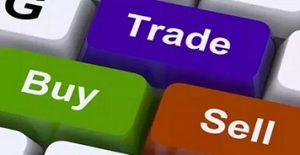7 CFD trading tips to avoid losing money
For experienced traders, CFD trading is second nature; however for beginners, it’s not so simple. CFD trading can be an intimidating and daunting subject, but with the right training and education, you can learn how to trade successfully. To help get you started, here are seven CFD trading tips that you must consider.
1. Start By Using a Demo Account
Financial trading is relatively easy to get into – all you need is internet access, a computer (or phone) and a few dollars to get started – but that doesn’t make it easy. In fact, around 80-90% of people lose money when trading!
It’s probably true that you’ll gain the most valuable experience/s when using a live trading account, however that shouldn’t stop you from opening a demo trading account with a broker before you advance to a live environment.
Most brokers will offer demo accounts (or simulated/ test accounts) – use these to place test trades, to try out trading strategies and to familarise yourself with a broker’s platform before opening a live account.
2. Create (And Follow) a Trading Plan
Creating a strict, sensible trading plan is probably the most important tip we can give you – everything else in this article won’t matter if you don’t have a plan in-place. To be blunt – without a trading plan, it’s almost a certainty that you will fail. Secondly, you must follow this agreed plan at all times and not deviate! Thirdly, the trading plan must be written down (or typed) on paper – entry and exit points, position size, % of account funds allocated to said trade etc.
If you’d like help putting together a trading plan, then we’d recommend using our friends at The Trading Game to get started – they offer a free template – see more here.
3. Start Small
Dip your toe in the water before jumping in!
Once you’ve spent time practicing on a demo account and have your trading strategy in place, you’ll probably be ready to commit to a live trading account. Now things get real! You may have been an awesome trader on your demo account but forget all of that, things are just plain different when it’s your hard-earned money on the line. As such, please start small by depositing only a small amount onto your account and by trading small sizes to begin with.
4. Control Your Leverage
Leverage is one of the main benefits of CFD trading as traders have the ability to make magnified profits with a relatively small deposit. On the flip-side, traders can lose heavily very quickly and can, in some instances, end up owing their broker money if the market gaps.
As an inexperienced trader, you should limit the amount of leverage you use (to begin with). Only when you’ve gained the right amount of trading experience should you look to increase your rates of leverage. Broker’s can tailor leverage to suit your needs – just ask them if you’d like it lowered (or increased). We’d recommend maximum leverage of 1:100 to begin with.
5. Keep Detailed Records Of All Trades
This is part B to point 2 above (Create and follow a trading plan). Have your trading strategy in-place first and foremost, and then also record your trades. Keeping a detailed trading journal is a very effective way to learn – both from losses and winning trades. The journal should include everything from; opening & closing dates, market name, entry & exit prices, stop-losses, limit orders, losses, profits, etc.
6. Risk Management
“Know when to hold em, know when to fold em”.
Successful traders will tell you that it’s not when you get into a trade that counts, but when you get out and that’s why risk management strategies should play an important part in your trading plan. Put simply, always use a stop-loss order to protect yourself from the downside and always place that stop-loss when you first open a trade – this will ensure you do so according to your trading plan, rather than as a reaction once the trade is opened and the market has moved. Stop-loss orders will ensure that your losses are kept to a minimum (unless the market “gaps”).
On the flip side to stop-loss orders is limit (profit) orders. These protect profits which are obviously very important! You should always look to use trailing-stops and/or limit orders to lock in your profits.
7. Final CFD Trading Tip: Find a Reliable Broker To Trade With
 The final step is to find your ideal broker to trade with. This may sound easy but it’s not – there are 100+ brokers out there! Our advice is to find one who is regulated, reputable and offers fair & transparent pricing on their trading platform. Again, not easy!
The final step is to find your ideal broker to trade with. This may sound easy but it’s not – there are 100+ brokers out there! Our advice is to find one who is regulated, reputable and offers fair & transparent pricing on their trading platform. Again, not easy!
To find the best possible broker, we’d recommend the process of elimination.
Firstly, start with regulation – are they properly regulated by their nation/ regions governing body? For instance, in Australia, only trade with ASIC-regulated brokers and in the UK, only trade with FCA-regulated brokers. This will knock the list of 100+ brokers to around 40-50.
Next, look for a broker that offers the following; the markets that you’re hoping to trade, a trading platform/ functionality that you like, fair spread and commission charges that are easy to find on a broker’s website, the amount of leverage on offer, initial deposit amounts, account promotions etc. Only once you’ve completed some thorough research on the points above should you commit to any one broker.
Use The Comparison Table Below To Compare Some Of The Leading CFD Brokers.
Leading
CFD Brokers
Who are they?
Standard Leverage
Regulation
Min. Deposit
Segregated Bank Accounts?
ASX Stock Commission
Australia 200 spread
Wall St 30 spread
AUD/USD spread
Spread Type
Trading Platform
Next Steps
Low-Cost
CFD Provider
200:1
SCB
$0
0.07% with $5 min.
0.9pts - FIXED
1pt - FIXED
0.6 pips - FIXED
Fixed
CloudTrade, MT4
Fast-Growing
CFD Broker
30:1 (AU)
ASIC, FCA
$100
No ASX stocks
1pt
From 1.6pts
From 0.5 pips
Fixed & Variable
cTrader or MT4/ MT5

World-Leading
CFD Broker
30:1 (AU)
ASIC, FCA, MAS
$100
0.08% with $5 min.
1pt
1.6pts
From 0.5 pips
Variable



